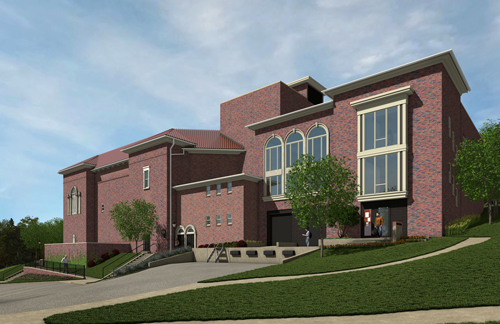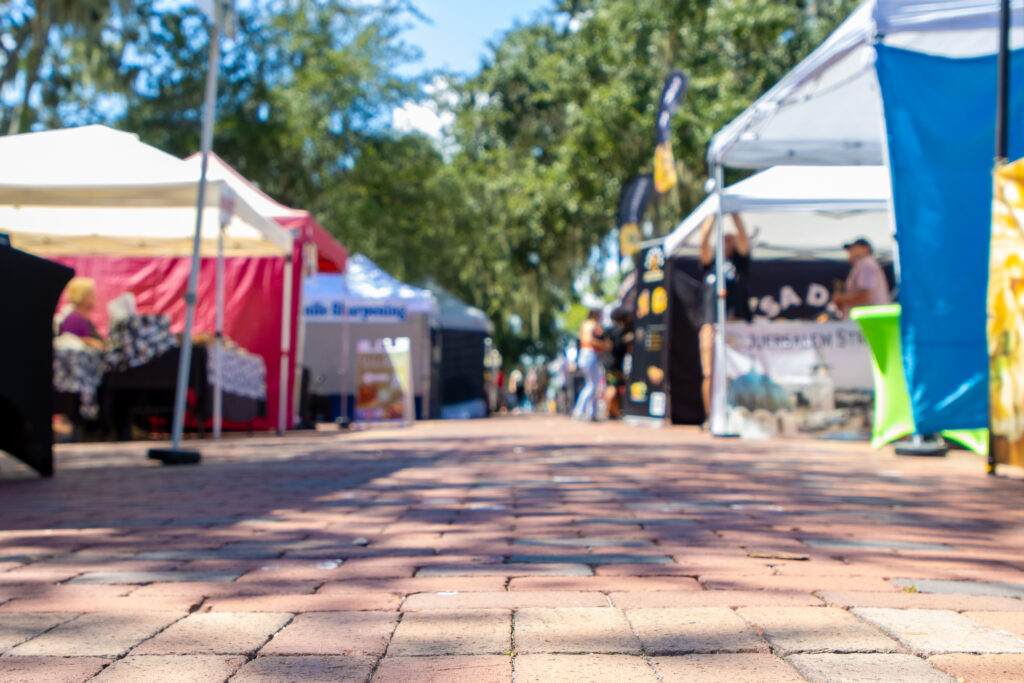Hoyt Sherman to build addition, expand legacy

PERRY BEEMAN Jan 9, 2019 | 8:10 pm
7 min read time
1,601 wordsArts and Culture, Business Record InsiderSit down with Robert Warren and Fred Weitz in an ornate room at the art gallery and performance venue Hoyt Sherman Place, and the full flavor of what is about to happen becomes clear.
Warren and Weitz sat at a long wooden table next to a $50,000 Tiffany silver tea set that was a gift to early Des Moines leader Hoyt Sherman from the Rock Island Railroad. Warren has created strong buzz in the community with added concert bookings since he became executive director in 2015. Now he notes that the facility will soon be expanded in a $3.5 million campaign.
A three-level, 9,000-square-foot addition and three other remodeling projects will create offices, lounges for performers, restrooms, meeting areas and food storage. Mike Simonson is the lead architect, and Weitz Co. is the general contractor. B.J. Frideres is the project manager for Weitz.
Warren said the time seemed right for Act III — which comes after Act I with the Des Moines Women’s Club turning Hoyt and Sara Sherman’s mansion into their headquarters, and Act II, building the auditorium onto it in the early 20th century.
“We felt as a board and a staff we were ready because in the last three years we have been able to make the endowment whole again at $4.2 million,” Warren said. “We paid off all the bad debt. There was a construction loan from 2004 of $265,000 that has been paid off. The debt came after the restoration costs for that project outran the pace of fundraising, Weitz said.
For 20 years after the foundation formed in 1995, all of the interest from the endowment, and $271,000 of the corpus, was spent to keep the operation going, Warren said.
Weitz Co. built the original structures and led the remodeling in 2003 that replaced all the auditorium seats and added auditorium air conditioning. Fred Weitz, a longtime Hoyt Sherman board member, said much of the work now taking place would have been done close to 20 years ago but the foundation ran out of money for the added work.
“We raised a lot of money, but it didn’t go far enough,” Weitz said. “We knew we were terribly short of toilets, we didn’t have a green room, we didn’t have showers. We spent more than we had, and had to take out a mortgage,” Weitz added.
“It’s just a wonderful thing that now we are able to move ahead and get things done and in a sense finish the job,” Weitz added.
Hoyt Sherman Place now is debt-free. The endowment has been restored, and in the last two years, no interest has been spent. The board plans to keep it that way, resisting the urge even to use the 5 percent allowed under foundation guidelines, Warren said.
Why have the endowment if it isn’t helping pay for operations?
“Because our facility is $16.5 million of physical structure, plus $6 million of art. If any portion of that were damaged or destroyed, the endowment fund is there, I think, as a buffer until we are able to rebuild and get back,” Warren explained.
Weitz recalled that it was one particular artwork, “The Memory of Cole” by Frederic Edwin Church, that sold for $4.2 million and provided the endowment in 1999 after the Des Moines Women’s Club deemed it too valuable for the local collection. That piece was donated to the women’s club in 1952 as part of a collection of Nason Bartholomew Collins, a local businessman and philanthropist.
It was another work from that collection, donated by Collins’ heirs, that Warren recently found in storage at Hoyt Sherman. The 16th-century “Apollo and Venus” by Dutch painter Otto van Veen is estimated to be worth $4 million to $17 million. The work once was displayed in the Metropolitan Museum of Art in New York City.
Van Veen’s works are shown around the world in part because he taught Flemish artist Peter Paul Rubens.
“Apollo and Venus” has been restored, but it has not been displayed because the museum wants to upgrade security, Warren said.
“When our insurance company saw the value in the appraisal, they said it’s high time that we got security cameras,” Warren noted. “We quickly wrote a couple of grants and we have $36,000 to install cameras.”
The insurance company gave Warren a choice. Install cameras, or post a full-time armed guard, “because the news focused attention on the rest of the collection on the national and international levels,” Warren said.
Another part of the Act III construction plans involved buying a sliver of property on the north edge of the parking lot from the city so the driveway can be moved and a better buffer established between Hoyt Sherman and the Bridal Row neighborhood to the north. At the same time, tour buses will shift over to the area by the art gallery, where they will have more privacy and security.
Backers of the project had city approval to build either two floors or three floors. When the price of the third floor came in at $450,000, the decision was made to add it, Warren said. Half of the extra space will be a green room and classrooms, and more restrooms. The building will offer views over the top of Iowa Methodist Medical Center.
The Krause Family Foundation is looking into naming rights at the new addition, which will offer direct views of Krause Gateway Center, the Renzo Piano-designed headquarters for Kum & Go, Warren said.
The addition will make the complex more modern and more user-friendly, and few will be able to tell where the additions begin and the historic architectural wonder leaves off. “We want it to match without being over the top,” Frideres said.
“People are excited about how it’s hard to tell where the additions are,” Warren said.
Among the major elements of the latest project:
– Ten new women’s restroom stalls and six for men.
– A redesigned loading dock that will accommodate two trucks, not just one. “We are bringing in larger shows now,” and one truck isn’t enough, Warren noted. “Like Martina McBride, and the Brit Floyd show, they could only unload one truck because of the timing constraints. So they would have to pick and choose lights, costumes, scenery. Some won’t even consider us if we’re not a two-truck facility.”
– A second-level donor lounge.
– Better green room facilities for visiting artists.
– A new rehearsal space that will serve as an alternative to renting the main stage.
– Showers and laundry facilities for performers. The auditorium had rented hotel rooms before.
– Improvements to ensure full accessibility for people with disabilities.
– Lobby space for community events.
The project will help make life easier for the kitchen staff and caterers.
“We’re doing about $200,000 a year on concessions, beer and soda, and it all has to come in on the day of the show and leave” because there’s no storage, Warren said. That has crimped caterers. The project will remedy that with storage and a walk-in cooler.
That’s an important issue when Hoyt Sherman has doubled the number of concerts per year to 80, and hosted 327 events in 2017.
Community groups regularly meet at Hoyt Sherman, too. Ballet Des Moines had two of its best ticket sales years for “The Nutcracker” as Hoyt Sherman improved, Warren said.
Sometimes the facility has drawn thousands to events on the lawn — without being able to offer access to restrooms next to it. With the recent news that Hoyt Sherman will revive the defunct Jazz in July series in July on its lawn, the need for those facilities becomes even more apparent.
“We hosted Halloween on the Hill and there were 4,000 people coming through with no bathroom facilities in three hours,” Warren said. The remodeling will set up a bank of restrooms on the east side of the building that can be left open when the rest of the complex is locked, Warren said. That will make events on the lawn more comfortable for those who don’t consider a walk to the QuikTrip’s restrooms down the hill a part of their glamorous evening.
Hoyt Sherman drew 100,000 visitors last year. Some of that was for receptions, weddings and the like. It wasn’t all concerts or art tours.
The auditorium has been around for almost 100 years. Major Hoyt Sherman and his family lived at the site before the Des Moines Women’s Club added the gallery and auditorium. It was the first public art gallery in town.
Fred Weitz’s grandmother Alice Weitz was president of the Women’s Club when the board decided to build the auditorium in 1922. An earlier plan, in 1917, was postponed when World War I began right after the auditorium deal was signed.
The success of the current campaign has a lot to do with Warren, Weitz said. “He’s already raised a hell of a lot of money. I think the reason he is able to do that is, first of all, he’s turned the place around, and everyone knows that. They know it’s making money and not losing money.”
Weitz raised a lot of money for the facility over the years. He helped guide the construction. So he can appreciate it when Warren added, “We’re debt-free.”
The Weitz family was involved in the decision of the Des Moines Women’s Club to build a theater at the site in 1923, and handled the 2003 renovation. It now will construct the addition.
Fundraising will continue for the next year. Groundbreaking should come in April, and construction will take a year, Warren said.











